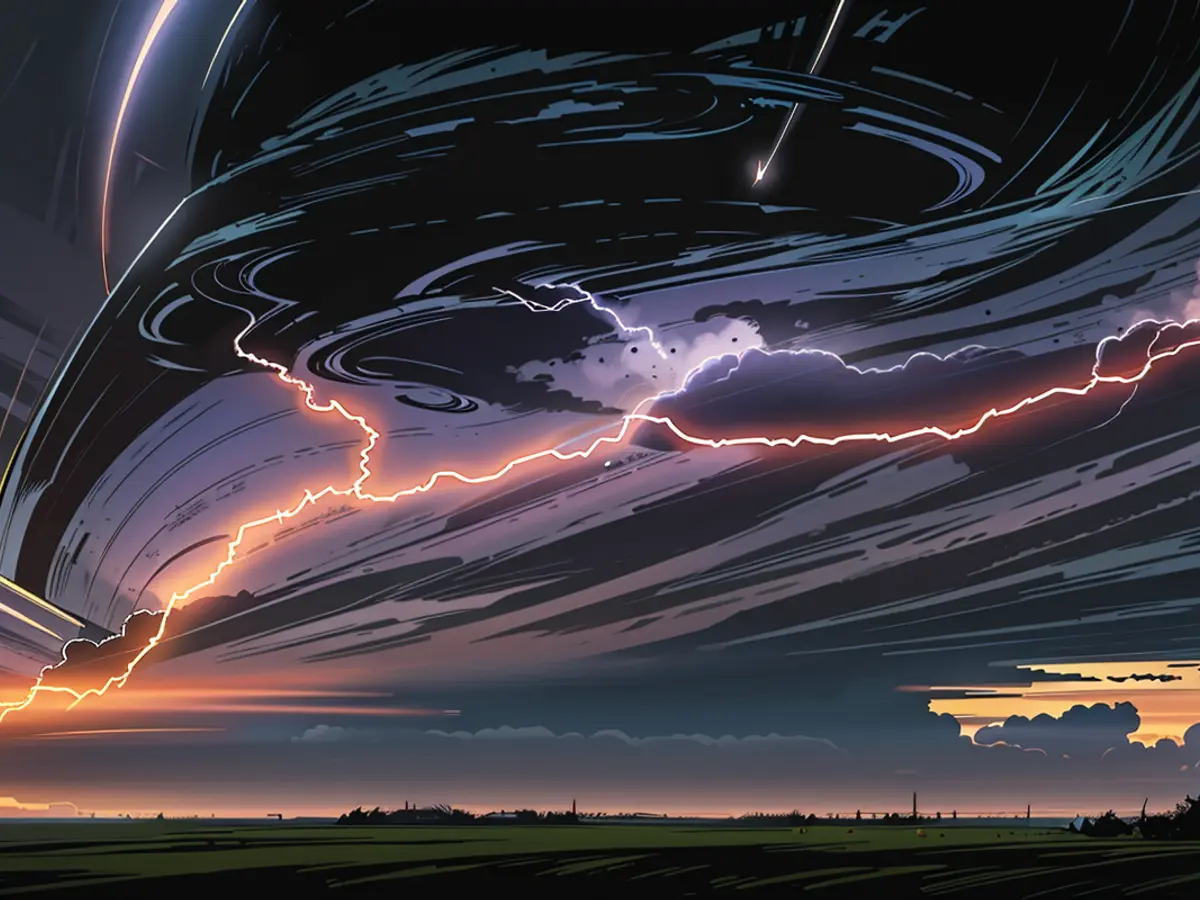The process of lightning's generation and thunder's production
How Lightning Strikes Happen
A lightning bolt happens when an electrical field develops inside a storm cloud. Inside the cloud, tiny ice crystals turn positive, while water droplets become negative. The upper, colder part of the cloud becomes positively charged, while the lower part becomes negatively charged. Eventually, this electricity finds a way to discharge, resulting in a lightning strike.
This discharge can heat the air to around 30,000 degrees Celsius and stretch over several kilometers. The longest lightning strike on record, according to the World Meteorological Organization (WMO), stretched over 750 kilometers across the USA.
These electrical discharges can take various forms, with cloud-to-ground discharges being the most dangerous. Cloud discharges stay within the thundercloud, lighting up the sky, while air discharges extend into the atmosphere without touching the ground.
Risks of Lightning Strikes
Lightning strikes between clouds and the ground without any rain nearby are known as dry lightning strikes. These are particularly dangerous because they often cause wildfires, especially after long periods of drought. In Germany, dry lightning can occur when the storm system that usually brings rain fails to reach the strike location or only brings minimal precipitation.
For humans, a lightning strike can deliver a current of over 100,000 amperes, causing burns, paralysis, or even heart failure. The German Weather Service (DWD) advises staying inside solid buildings or vehicles during a thunderstorm. The metal body of a car allows the lightning current to flow outside the vehicle, providing some protection to the occupants.
Why Thunder Occurs
The thunder we hear after a lightning strike is caused by the sudden and violent expansion of heated air in the lightning channel. This rapid expansion creates a shockwave that travels outwards, reaching our ears and registering as thunder.
If the lightning channel is perpendicular to our position, we hear a single, sharp clap. If the lightning channel is inclined, the pressure waves from different parts of the lightning channel reach our ears at different times, resulting in a prolonged rumble.
To estimate the distance of a lightning strike, you can use the "five-second rule." Since lightning is nearly instantaneous, but sound travels at about 330 meters per second, you can calculate the distance to the lightning by counting the time between the visible flash and the sound of thunder. Five seconds corresponds to about a kilometer.
Why the Air Smells During a Summer Rain
The scent that fills the air during a summer rain is called petrichor by researchers. This term comes from the ancient Greek words "petros" (stone) and "ichor" (the fluid in the veins of the gods). When rain falls, it picks up dust particles, which release an oil scent produced by plants during periods of drought. The wind then carries these scent molecules, allowing us to smell the rain before it reaches us.
This phenomenon can occur on chilly days, but it is most common during the summer months. The ground must be slightly warmed for this to happen, explains the DWD. This is less likely to occur during the winter months.
During thunderstorms, the electrical discharges can be dangerous, especially cloud-to-ground discharges that pose the greatest risk. Dry lightning strikes, which occur between clouds and the ground without rain, are particularly notorious for causing wildfires.







